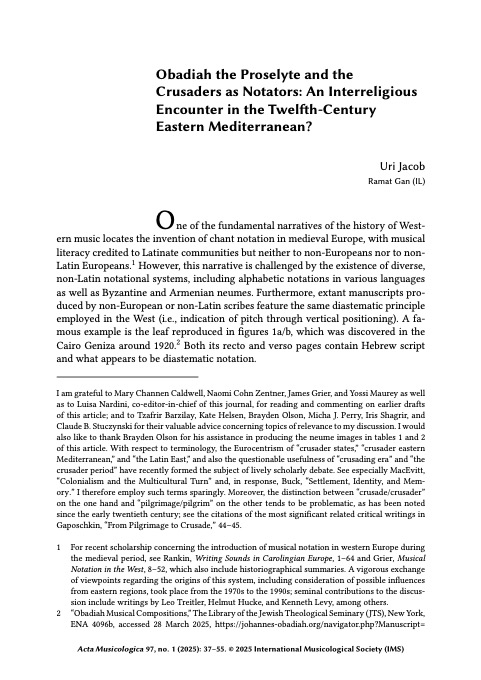Abstract
Two extant music manuscripts with Hebrew text inscribed by Obadiah the Proselyte, a twelfth-century Jewish convert who lived and worked in the Middle East, challenge the dominant narrative of music history that credits early musical literacy solely to Latinate communities in Europe. These manuscripts raise the question of the identity of those for whom Obadiah prepared his material, since there is no evidence to suggest that Jews of the eastern Mediterranean could read musical notation or that many Latin persons of this period could read Hebrew. The present article revisits the social and cultural contexts of these documents, proposing that Obadiah’s use of mirror-image neumes links his inscriptions with the distinct notational system developed by crusaders of Latin origin, who aimed to unify the singing of Latin liturgical chant in the Holy Land. An emergent Latin fascination with Hebrew reading during the twelfth century serves as the basis for a hypothesis that such crusaders may well have taken an interest in Obadiah’s manuscripts. My discussion situates a study of musical notation within broad consideration of interreligious exchange in the eastern Mediterranean region, interpreting the juxtaposition of Latin liturgical books and Obadiah’s Hebrew documents from the perspective of global musicology and exemplifying a cross-cultural examination of different manifestations of early musical literacy.
